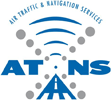Air Traffic and Navigation Services (ATNS) Company of South Africa, hosted the inaugural AVI Afrique Africa Aviation Innovation Summit at The Innovation Hub, Pretoria, on November 7 2012.
The Summit is a platform to share information between industry, government and non-governmental organisations active in the aerospace industry and to foster innovation for all role players and beneficiaries of air navigation services.
"The number of people attending today indicates the need for this summit," says acting ATNS Chief Executive Officer (CEO), Thabani Mthiyane. "They are the champions of our industry and we hope that, together, with them, we can create a platform for an integrated approach to innovation and Research and Development targeted at the aviation sector.
"We also intend for this forum to cut across the borders of South Africa and the different spheres of the African continent. With our influence extending across ten (10%) percent of the world’s airspace we have come to appreciate a collaborative approach in establishing solutions for the industry."
Many organisations were represented at the Summit and guest speakers included Dr Sandile Malinga, CEO of the South African National Space Agency (SANSA), Beeuwen Gerryts, Chief Director of the Department of Science and Technology (DST), Professor Sunil Maharaj from the University of Pretoria (UP), Leago Takalani, Acting Executive of Engineering and Technical Services at ATNS, and Kenneth Miya, winner of the 2011 Emerging Genius Popular Mechanics Inventor of the year award.
There were two panel discussions complemented by John Wesley of the Council for Scientific and Industrial Research (CSIR), Allen Moore of Board of Airline Representatives of South Africa (BARSA), Tsepo Peege, Acting Deputy Director General (DDG) of the Department of Transport, Dr Jorg Lalk, Senior Lecturer at UP, Ndivhuo Rabuli, Senior Manager of Legal at ATNS, Letlotlo Phogole, General Manager of Advanced manufacturing at Telecommunications Industry Association (TIA), Mike Higgins, Regional Vice President for Africa at International Air Transport Association (IATA), Professor Laurent Dala, Head of Aeronautical Engineering at Witwatersrand (WITS) University, Bongi Mtlokwa, Senior Researcher at the South African Civil Aviation Authority (SACAA), Garth Tolme, Software Engineering Manager at Denel Aviation, Bheki Mkhize, MET Authority manager at South African Weather Service (SAWS), and Eugene Avenant, Director of Telemetry Tracking & Command at SANSA.
Kenneth Miya, of Mpumalanga, was representative of the type of home-grown, African innovation that ATNS seeks to foster through the Summit. He invented a cellphone-based security system for domestic and other mobile security applications that is in the final pre-manufacture stages of development.
While Professor Sunil Maharaj of UP accepted that innovation stems from many quarters, he acknowledged that the majority of feasible new concepts emerge from academia and, in the aerospace industry in particular, from those completing or who have completed their PhD theses. One of the challenges, he says, is meeting the required growth in the number of graduating PhDs.
South Africa is at present maintaining a consistent supply of graduates but has yet to meet the growth demands, particularly those set forth by the national planning commission – which seeks five thousand (5 000) Doctoral degrees per year by 2030. Even then we would attain only 100 people with doctoral degrees per million population. That is low by international standards with the UK leading the pack at 288 doctoral qualifications per million population.
However, South Africa and other African states already host a high calibre of capability in the aerospace and aviation industries. Dr Sandile Malinga of SANSA demonstrated South Africa’s space programme with a focus on its navigation services to air traffic. It is the common misconception that navigation is handled by Global Positioning System (GPS) alone yet there remains a strong reliance on magnetic and other navigation instruments, particularly as backup systems. In addition, information transmission networks incorporating low earth orbit and space systems, can reliably reach any place on earth and therefore form a fundamental support system for those networks.
Beeuwen Gerryts discussed the innovation challenges, characteristics and innovation gaps in Aviation and the Aerospace domain. South African organisations are well integrated into the European R&D tracks, he says, and predominantly develop technologies. South African organisations also act as sub-contractors to large aviation Original Equipment Manufacturer (OEM) businesses in Europe and North America while being OEMs themselves to developing nations.
Established markets abroad, however, are difficult areas for local businesses to innovate as sub-contractors and they do so largely around their specific sub-assemblies, he says. In addition, the enormous expense of development and manufacturing, coupled with the cascading effects of global manufacture, have given rise to globalised risk sharing. Each sub-contractor is increasingly responsible for R&D in their specific niche and consequently shares in the profits, but that model requires large investment to maintain pace with the R&D track.
In the long-haul market the adoption cycle of new technologies can range anywhere from 10 to 15 years which further increases the risk for innovators. Far greater opportunity for innovation in the aerospace industry in Africa lies in other technologies such as Unmanned Aerial Vehicles (UAVs), general aircraft, helicopters, guided weapons, security and aviation-related services.
Leago Takalani says that the industry must hone in on the needs of customers and stakeholders and foster a readiness to deal with disruptive market forces from abroad. There are many enablers for innovation in the African aviation industry, she says, yet there is no current collaboration or integration of effort.
"We cannot be everywhere and do everything so we must play a part and find our niche of excellence, capitalise on that, and this forum is to invite all industry players to a multilateral, integrated approach to innovation for the industry, that can contribute to the competitiveness, the bottom line, and value-add to the industry. Integration is fundamental to that."

